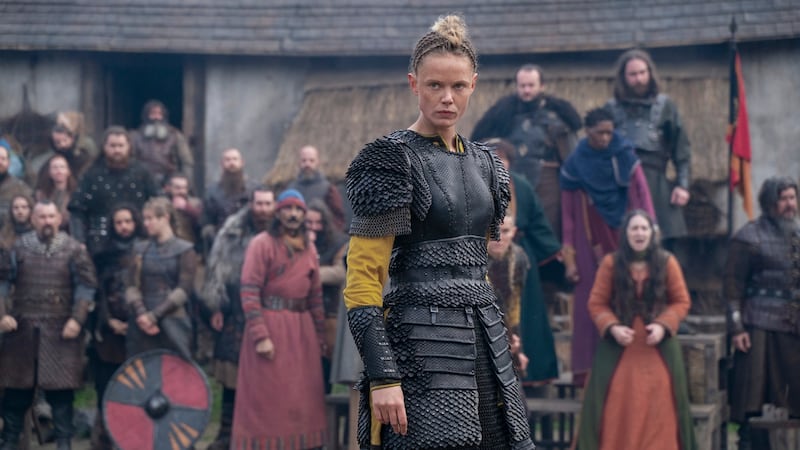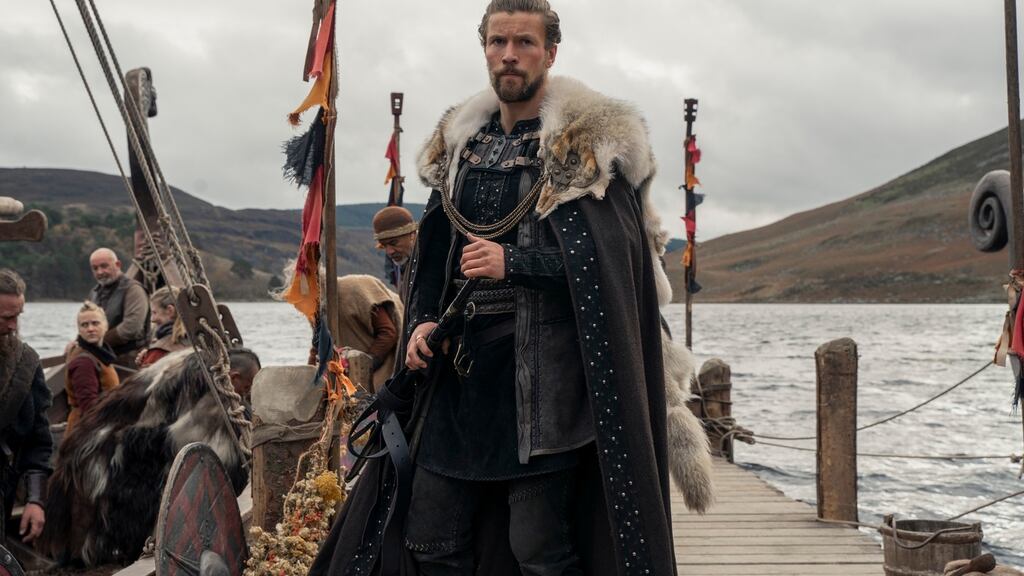It's the television epic that makes Co Wicklow the backdrop for the blood-splattered adventures of 11th century Scandinavians. Now figures published by Netflix suggest Vikings: Valhalla racked up more than 113 million hours of viewing in its first week, becoming the top series worldwide on the streaming platform.
The first season has climbed into Netflix's top 10 in 90 countries, bringing Lough Dan, Avondale, Lough Tay, Childers Woods and other locations near Ashford Studios to a global audience, while the screen tourism potential of the show – a beneficiary of the Section 481 tax credit – has already made its lead actors hot properties for Tourism Ireland.
"The production design and locations teams were amazing. They scoured everything within 20 miles of the studio, so they knew all the little places. But I also knew them," said Hannah Quinn, the IFTA-nominated Irish director of episodes five and six.
“I would say ‘what about that little place around the corner?’ and push it out a bit. They let me go and shoot one of my scenes up on Bray beach, which I don’t think they had done before. It was exciting to find a place that we could work into the schedule and make it look as authentic as possible.”
For showrunner Jeb Stuart, asked to create a spin-off to the History Channel’s Vikings series by its Irish executive producer Morgan O’Sullivan, the appeal of the project lay in exploring a time period with resonance to contemporary events.
"I was definitely looking for a period in the Viking timeline that related to what is going on right now. At the time that we started this, the immigration issues in Europe and places like Texas were very big, and I thought the ideologies of the right and the left were very similar to the pagan Vikings and the Christian Vikings."
The stunt-filled saga opens with the St Brice's Day massacre, the 1002 killing of Danes living in England, before showing the arrival of Greenlanders at Kattegat, a fictional Viking settlement on the shores of a Norwegian fjord (in reality, the Kattegat is a sea area between Denmark and Sweden). Through diverse casting, it seeks to correct the idea that the Vikings were a homogenous group.
“The Vikings very rapidly got out of Scandinavia, and they spread. One of the things I wanted with my series was to feel a little bit of the integration that was already beginning to happen.”
Covid conditions
The first eight episodes, filmed in late 2020 and early 2021, employed 59 cast and 554 crew and had more than 600 extras on set. This would have posed challenges for its producers, including Irish company Metropolitan Films, at the best of times. Masked-up, pre-vaccination Covid conditions made the task even more fraught.
“It was actually a very scary time,” said Mr Stuart. “We were very fortunate because we did have some close contacts and we had one or two cases, but we were able to completely isolate certain parts of the production and move forward.”

Ms Quinn went on a hike up Bray Head with actors Frida Gustavsson and Leo Suter "just to try and get to know each other" without the on-set communication barrier of masks.
“The Covid thing was a whole new world, I have to say. When you’re talking to actors, they need to see your face and your body language to make sure they understand what you’re feeling.”
Norse battles, pagan rituals and banqueting-hall tension are on track to remain a candlelit component of Ireland’s streamer-fuelled screen boom: the second season of Vikings: Valhalla has wrapped filming, while Ms Quinn will return to work on the third when it goes into production this spring.
“Incredible communication” and “lots of great planning” make it possible to produce action-intensive episodes at a lightning pace, said Mr Stuart, whose writing credits include the features Die Hard and The Fugitive.
“It’s a little bit easier now that we’ve done two seasons and the crew knows that we can do it. They know that we can pull London Bridge down.”















